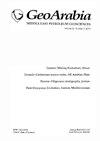Organic geochemical characteristics and depositional environments of the Jurassic shales in the Masila Basin of Eastern Yemen
引用次数: 62
Abstract
In this paper, organic matter content, type and maturity as well as some petrographic characteristics of the Jurassic shales exposed in the Masila Basin were evaluated and their depositional environments were interpreted using organic geochemical and organic petrological studies. The total organic carbon (TOC) contents of shales in the Sunah, Wadi Taribah, and Kharir fields vary between 2.4% and 4.7% with high Hydrogen Index (HI) values. All shale samples display very low Oxygen Index (OI) values. The Sunah and Wadi Taribah shales contain Type II organic matter, while the Kharir shales contain Type II, with minor contributions from Type I organic matter. Tmax values for the shales range from 428 °C to 438 °C and vitrinite reflectance values (%Ro) range from 0.52% to 0.80%. These values reveal that the Sunah and Kharir shales are at peak mature stage while the Wadi Taribah shales are early mature. This is supported by their biomarker maturity parameters. The pristane/phytane (Pr/Ph) ratios range from 1.8 to 2.3. In addition, all shales show a homohopane distribution which is dominated by low carbon numbers, and C35 homohopane index is very low for all shale samples. All these features may indicate that these shales were deposited in a suboxic environment. Sterane distribution was calculated as C27>C29>C28 from the m/z 217 mass chromatogram for all shale samples. The Sunah, Wadi Taribah and Kharir shales are believed to have good oil generating potential. This is supported by high total organic carbon content, hydrogen indices up to 400 mg HC/g TOC and early to peak mature oil window range.也门东部马西拉盆地侏罗系页岩有机地球化学特征及沉积环境
通过有机地球化学和有机岩石学研究,对马西拉盆地出露侏罗系页岩的有机质含量、有机质类型、有机质成熟度及部分岩相特征进行了评价,并对其沉积环境进行了解释。Sunah、Wadi Taribah和Kharir油田页岩总有机碳(TOC)含量在2.4% ~ 4.7%之间,氢指数(HI)值较高。所有页岩样品的氧指数(OI)值都很低。Sunah和Wadi Taribah页岩含有II型有机质,而Kharir页岩含有II型有机质,只有少量的I型有机质贡献。页岩的Tmax值范围为428 ~ 438℃,镜质组反射率值(%Ro)范围为0.52% ~ 0.80%。Sunah和Kharir页岩处于峰值成熟阶段,而Wadi Taribah页岩处于早期成熟阶段。这得到了它们的生物标志物成熟度参数的支持。植物烷/植烷(Pr/Ph)比值为1.8 ~ 2.3。此外,所有页岩均表现出以低碳数为主的同藿烷分布,且所有页岩样品的C35同藿烷指数都很低。这些特征表明这些页岩沉积于缺氧环境。所有页岩样品的m/z 217质谱计算得到甾烷分布为C27>C29>C28。Sunah、Wadi Taribah和Kharir页岩被认为具有良好的产油潜力。总有机碳含量高,氢指数高达400 mg HC/g TOC,成熟油窗范围早至峰值。
本文章由计算机程序翻译,如有差异,请以英文原文为准。
求助全文
约1分钟内获得全文
求助全文
来源期刊

Geoarabia
地学-地球科学综合
自引率
0.00%
发文量
0
审稿时长
>12 weeks
期刊介绍:
Cessation. Published from 1996 to 2015, GeoArabia, The Journal of the Middle Eastern Geosciences was a quarterly journal covering the petroleum geosciences in the Middle East. The journal covers subjects such as: - sedimentology - tectonics - geophysics - petroleum reservoir characterization
 求助内容:
求助内容: 应助结果提醒方式:
应助结果提醒方式:


